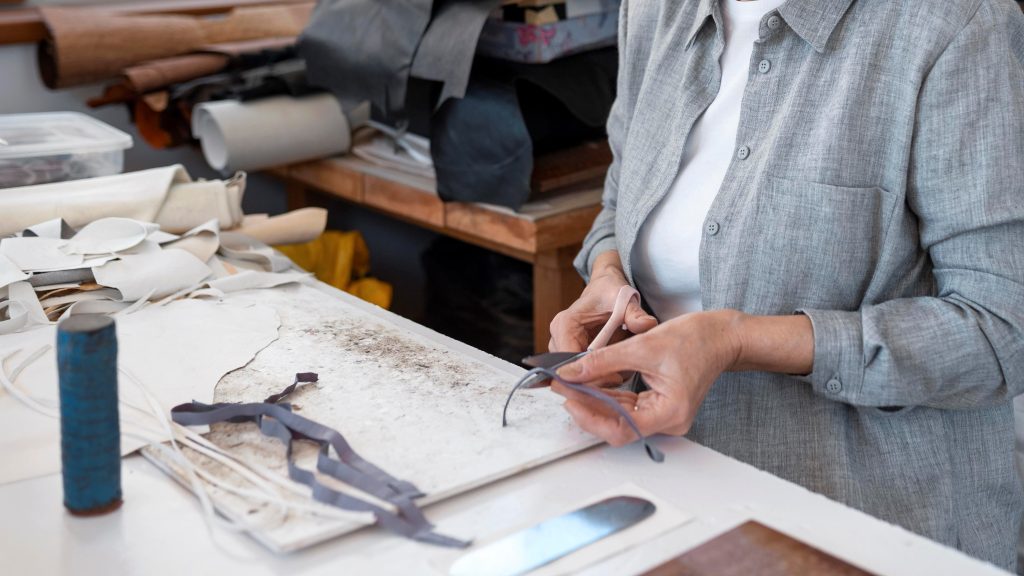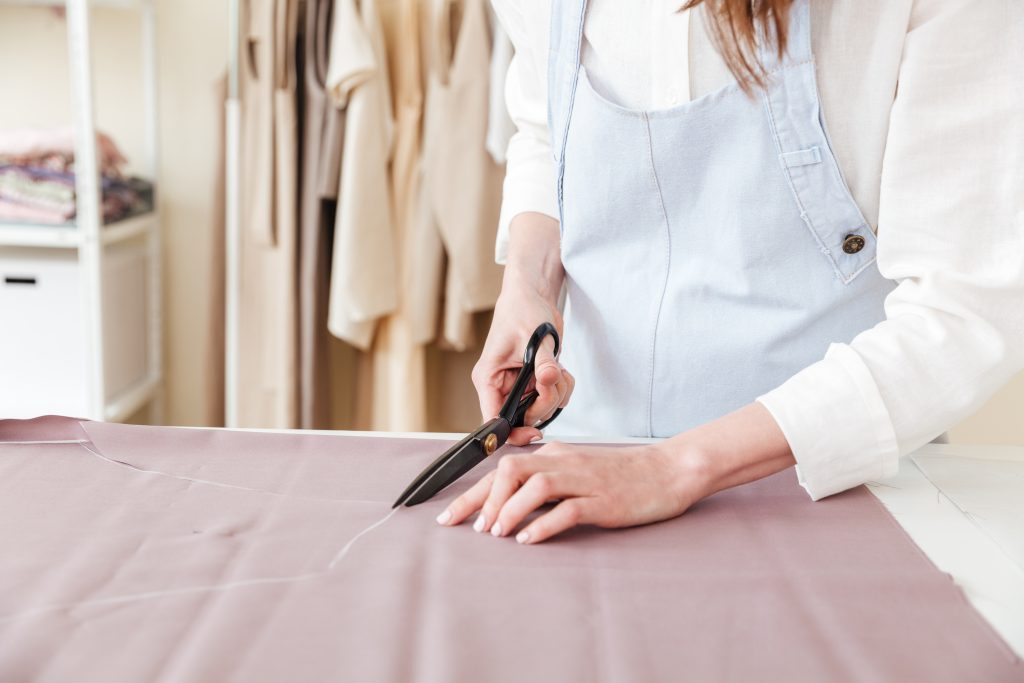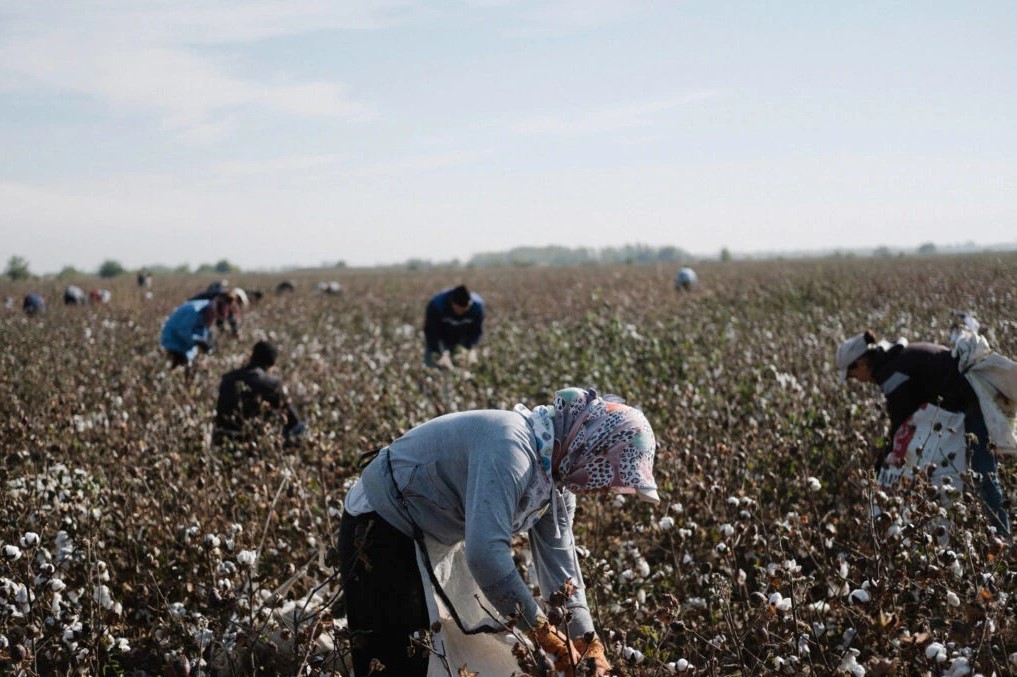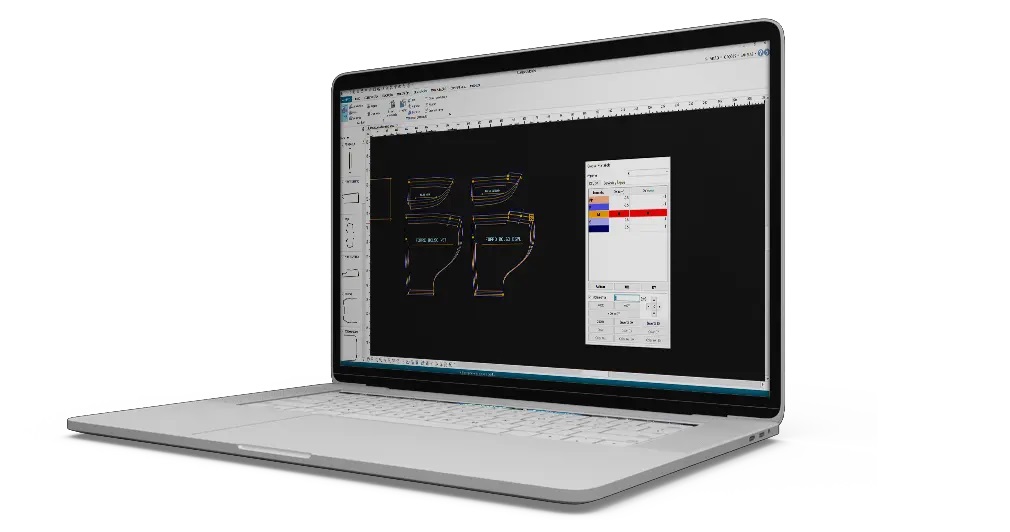Summary:
- Eco fashion meets consumer demands while contributing to safeguarding the planet and its future;
- Building sustainability in fashion begins with conscious choices in fabric selection and responsible production;
- Enhancing production processes is key to minimizing waste in the supply chain. Discover the potential of Audaces360 multi-solution for free and how to revolutionize your operations!

The fashion industry is undergoing a profound revolution, compelling insiders to meet the ever-growing demands of consumers.
Eco fashion emerges as a response to minimize the environmental impact caused by the fashion world, emphasizing the utilization of ecological raw materials, and adopting circular production methods.
To become a catalyst for meaningful change, this commitment needs to permeate the entire fashion chain. From fabric production and the creative process to manufacturing and consumer purchasing, every step plays a crucial role.
If you’re wondering how to do your part in this transformative journey too, read on!
Sumário
What is eco fashion?

By eco fashion, we mean a movement dedicated to driving tangible change by advocating for enhanced ecological integrity and social justice.
At its core, eco fashion revolves around the exploration of eco-friendly and renewable raw materials.
The production and processing of these materials prioritize minimal waste of natural resources while ensuring they are environmentally benign.
Additional to the focus on raw materials, which we will also explore later, eco fashion encompasses various other facets integral to the broader definition of sustainability within the fashion industry and beyond.
Learn more: Why consider sustainable consumption and production for your company?
Labor protection
Companies embracing eco fashion principles have a responsibility to uphold the rights of workers and all individuals involved in the supply chain.
This entails ensuring adherence to labor contracts and working hours, providing fair compensation, and maintaining a healthy and safe working environment.
Of particular significance is the impact on delocalized production, which often takes place in regions with less stringent labor regulations and oversight, where unfortunately forms of child labor are still present.
Addressing these challenges is crucial to advancing the cause of eco fashion and promoting ethical practices throughout the industry.
Respect for animals
In line with eco fashion principles, production practices should prioritize the elimination of animal exploitation, mistreatment, and killing associated with fabric and raw material production.
To ensure compliance with this requirement, various certifications provide consumers with confidence regarding the origins of fabrics and the processes they have undergone.
Quality of the substances used

As we know, the quality of materials used in fabric production and processing holds significant consequences.
It goes beyond reducing environmental pollution during the production phase; it also affects the well-being of the skin that comes into contact with these substances. Moreover, it directly impacts the sustainability of garment disposal.
Disposal, by the way, is a critical concern in the fashion industry, where an alarming amount of clothing is produced each year.
According to a study by the London Sustainability Exchange, between 80 and 100 billion items of clothing are manufactured annually, a staggering 400% increase compared to two decades ago.
Concurrently, an estimated 500 billion worth of garments are discarded each year without ever being worn.
Learn more: How to properly dispose of your clothing company’s textile waste?
What raw materials are used in eco fashion?
When it comes to eco fashion, careful consideration is given to the raw materials used, especially in clothing production. The focus is on sourcing sustainable and environmentally friendly fibers.
As we will see, these fibers can be different, but in general they share common characteristics in eco fashion:
- Pesticide free;
- Produced using energy from alternative sources;
- Emphasis is placed on minimizing water consumption;
- Chemical waste reduction;
- Low-impact dyes that are free from carcinogens and harmful substances, prioritizing the well-being of our skin and overall health.
And, among the most commonly used fibers in eco fashion are four notable examples:
Organic cotton

Organic cotton originates from the Gossypium plant, a shrub that has been cultivated for centuries, particularly in tropical and subtropical regions.
After approximately one hundred days from sowing, the plant blossoms with a soft and lightweight flower resembling that of the mallow plant. It is from this flower that the cotton fiber originates.
In many countries, this cotton is still hand-picked at the end of the hot season, with each cotton plant typically yielding between 2 to 5 kg of fiber.
Cotton is known for its lightness, shine, and softness, though it generally lacks significant stretch. It is highly breathable and resilient, capable of withstanding regular washing with common detergents, requiring only standard care during the drying process.
In the realm of eco fashion, it is essential that cotton is cultivated without the use of chemical products, employing natural and fair practices that prioritize the well-being of workers involved at every stage.
This distinction is crucial since, according to scholar Richard Fagerlund, cotton cultivation is currently one of the largest contributors to global pollution, accounting for approximately 25% of total pesticide usage.
Recycled cotton has also gained popularity in eco fashion. This type of cotton is obtained from discarded garments or processing waste.
Hemp
Hemp fiber is derived from the phloem of Cannabis Sativa plants, which predominantly thrive in temperate climates.
Italy, for instance, has a rich history of hemp cultivation, with the fiber traditionally used to create durable ropes and fabrics.
Hemp fabric offers remarkable benefits, making it suitable for various climates. It naturally keeps you cool during summers and warm during winters.
Additionally, hemp possesses antibacterial and antifungal properties, promoting freshness and hygiene. Its moisture-absorbing properties make it an excellent choice for regulating body moisture.
Notably, hemp boasts three times the tear resistance of cotton and exhibits exceptional resilience to wear and tear.
From an ecological standpoint, hemp is an environmentally friendly material. It requires approximately 50% less water compared to cotton, reducing the strain on water resources.
Linen
Linen is a natural cellulose fiber extracted from the stems of the Linum usitatissimum plant through a process of macerating the fibrous bundles.
It is renowned for its hypoallergenic properties and complete biodegradability. Moreover, the cultivation and processing of linen nourish and preserve the soil rather than depleting it.
One characteristic of linen is its ability to resist dust accumulation, making it an excellent choice for those with allergies. Additionally, it delivers excellent results in dyeing processes.
Although linen is often regarded as a fabric for summer, its insulating and thermoregulating properties make it suitable for year-round use. Its versatility and adaptability contribute to its enduring popularity.
Linen boasts an ancient history, having been cultivated thousands of years before Christ. It was widely utilized by civilizations such as the Egyptians, Sumerians, Babylonians, and Phoenicians.
An important aspect to highlight is that the processing of linen is entirely sustainable, making it a perfect fabric choice for eco fashion.
Qmilk
Qmilk exemplifies how eco fashion extends beyond fibers of natural origin and demonstrates the potential of research and ecology in creating a more sustainable world.
This textile fiber is derived from industrial milk waste. Anke Domaske, a German stylist and microbiologist, is the visionary behind this transformative fiber, which has evolved into a successful brand.
Qmilk offers an array of qualities: it is biodegradable, antibacterial, dermatologically tested, and free from chemical additives.
The fabric is exceptionally comfortable, lightweight, and gentle on the skin, providing a fresh and radiant feel.
Qmilk’s versatility makes it suitable for clothing, automotive uses, bandages, household linens, baby products, and even medical-hospital applications.
In terms of water usage, a mere 2 liters of water are required to produce 1kg of Qmilk fabric, contrasting with the10,000 liters needed for the same amount of cotton.
By eliminating polluting chemicals from the manufacturing process and repurposing milk waste, Qmilk not only promotes sustainability but also addresses the issue of waste in the milk industry.
Learn more: Learn what ESG score is and how to apply it to your clothing company
Embrace ecological production with Audaces technologies
As outlined in this article, eco fashion is not only a current trend but also a future imperative for the fashion industry.
Alongside the careful consideration of fabrics, their origins, and characteristics, packaging and production processes must also align with the sustainability demands of the market.
Technology emerges as a powerful ally, enabling the reduction of waste and inefficiencies across all stages of production while ensuring comprehensive supply chain control.
This transformative change extends beyond the textile supply chain; it encompasses the reorganization of work and production processes as a whole.
By leveraging Audaces technologies, you can propel your production towards ecological practices, achieving a more sustainable and responsible production process.
See how below!
Audaces Pattern

Audaces Pattern offers an ideal solution to minimize paper usage, errors, and rework, making it an essential tool for optimizing efficiency.
With its user-friendly and intuitive interface, the software becomes a valuable choice for those seeking to streamline their production process and improve collection timelines.
This fast, efficient, and profitable technology enables you to create digital models 70% faster compared to manual methods.
What’s more, Audaces Pattern includes an automatic measurement table feature, simplifying the development of even the most complex patterns. This functionality enhances precision, ensuring consistent and high-quality results.
Audaces 3D
How much fabric is wasted in the prototyping phase, especially due to problems related to communication?
With Audaces 3D, you can revolutionize this process by creating digital samples and simulating garment construction directly on your computer.
This advanced software enables you to visualize models in a three-dimensional environment. By utilizing digital samples, you can verify the fit, proportions, and overall design of your garments even before developing them.
Audaces Marker
Efficient marking plays a vital role in determining fabric consumption during garment production. Audaces Marker is the ultimate solution to optimize your marking process, surpassing manual methods by up to 13%.
By leveraging automatic nesting capabilities, Audaces Marker accelerates your production process, ensuring timely delivery while significantly reducing fabric waste.
But, above, it empowers you to take care of the planet and contribute to a more sustainable future.
Conclusion
Throughout this article, we delved into the world of eco fashion and discovered that achieving a more sustainable fashion industry requires action on multiple fronts.
From fabric production to selection, from the creative phase to the actual manufacturing of garments, every step plays a crucial role in driving positive change.
If you are interested in the topic and would like to learn how to increase your savings with materials and resources, don’t miss our free e-book!
Fill out the form below and gain access to some valuable insights:
FAQ
Eco fashion is a movement dedicated to driving meaningful change in the fashion industry, emphasizing ecological integrity and social justice.
Eco fashion embraces the use of sustainable raw materials such as organic cotton, hemp, linen, and Qmilk, among others. These materials are carefully selected to minimize environmental impact.
Technology is a key step toward creating greener packaging solutions, by, for example, optimizing production processes and minimizing waste throughout the supply chain.





